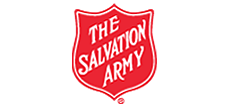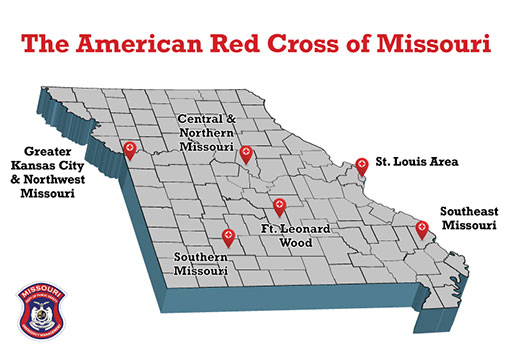Dam Failures
There are more than 80,000 dams in the United States and more than 5,000 dams in Missouri. Dam owners have primary responsibility for the safe design, operation, and maintenance of their dams. They also have responsibility for providing early warning of problems at the dam, for developing an effective emergency action plan (EAP), and for coordinating that plan with local officials.
Missouri has a Dam and Reservoir Safety Council (seven citizens appointed by the Governor) and a Dam Safety Program in the Department of Natural Resources: https://nid.sec.usace.army.mil/#/. While dam failures are not common, nationally, the most common reasons for dam failures are:
- Piping: Internal erosion caused by embankment leakage, foundation leakage and deterioration of pertinent structures appended to the dam.
- Erosion: Inadequate spillway capacity causing overtopping of the dam, flow erosion, and inadequate slope protection.
- Structural Failure: Caused by an earthquake, slope instability or faulty construction.
If you live downstream from a dam there are questions you should ask to ensure that you know the potential risk in advance.
- Is the dam a high-hazard or significant-hazard potential dam? To find out, contact your county emergency management agency, the State Emergency Management Agency or visit the National Inventory of Dams (NID) or the Association of State Dam Safety Officials (ASDSO).
- Find out who owns the dam and who regulates the dam. This information also should be available from your county emergency management agency, NID, or ASDSO.
- Once you determine that you live downstream from a high-hazard or significant-hazard potential dam and find out who owns the dam, see if a current emergency action plan (EAP) is in place for the dam. An EAP is a formal document that identifies potential emergency conditions at a dam and specifies preplanned actions to be followed to reduce property damage and loss of life. An EAP specifies actions the dam owner should take to address potential problems. It also includes steps to assist the dam owner in issuing early warning and notification messages to responsible downstream emergency management authorities that would respond to a potential emergency.
- If there is a dam failure or an imminent dam failure and you need to evacuate, know your evacuation route and immediately get out of harm's way. In general, evacuation planning and implementation are the responsibility of the state and local officials responsible for your safety. However, there may be situations where recreational facilities, campgrounds, or residences are located below a dam and local authorities will not be able to issue a timely warning. In this case, the dam owner should coordinate with local emergency management officials to determine who will warn you and in what priority.
Preparedness tips before a flood that could be caused by a dam failure
Create a plan for where you and your family will go in the event of a flood.
- Listen to commercial radio or television newscasts for the latest information.
- Be aware that flash flooding can occur. If there is any possibility of a flash flood, move immediately to higher ground. Do not wait for instructions to move.
- Be aware of streams, drainage channels and other areas known to flood suddenly. Flash floods can occur in these areas.
If you must prepare to evacuate, you should do the following:
- Secure your home. If you have time, bring in outdoor furniture. Move essential items to an upper floor.
- Turn off utilities at the main switches or valves if instructed to do so. Disconnect electrical appliances. Do not touch electrical equipment if you are wet or standing in water.
What to do during a flood caused by a dam failure
If you have to leave your home, remember these evacuation tips:
- Do not walk through moving water. Six inches of moving water can make you fall. If you have to walk in water, walk where the water is not moving. Use a stick to check the firmness of the ground in front of you.
- Do not drive into flooded areas. If floodwaters rise around your car, abandon the car and move to higher ground if you can do so safely. You and the vehicle can be quickly swept away. Six inches of water will reach the bottom of most passenger cars, causing loss of control and possible stalling.
- A foot of water will float many vehicles. Two feet of rushing water can carry away most vehicles, including sport utility vehicles and pick-ups.
What to do in the aftermath of a flood caused by a dam failure
- Listen for news reports to learn whether the community’s water supply is safe to drink.
- Avoid floodwaters; water may be contaminated by oil, gasoline, or raw sewage. Water may also be electrically charged from underground or downed power lines.
- Avoid moving water.
- Be aware of areas where floodwaters have receded. Roads may have weakened and could collapse under the weight of a car.
- Stay away from downed power lines, and report them to the power company.
- Return home only when authorities indicate it is safe.
- Stay out of any building if it is surrounded by floodwaters.
- Use extreme caution when entering buildings; there may be hidden damage, particularly in foundations.
- Service damaged septic tanks, cesspools, pits, and leaching systems as soon as possible. Damaged sewage systems are serious health hazards.
- Clean and disinfect everything that became wet. Mud left from floodwater can contain sewage and chemicals.
What to do if you have unmet needs following a flood caused by a dam failure
Throughout the recovery period, it is important to monitor local radio or television reports and other media sources for information about where to get emergency housing, food, first aid, clothing, and financial assistance. The following section provides general information about the kinds of assistance that may be available.
Direct Assistance
Direct assistance to individuals and families may come from any number of organizations, including:



Missouri chapters of the Red Cross:
- Greater St. Louis
- Central and Northern Missouri
- Southeast Missouri
- Greater Kansas City and Northwest Missouri
- Southern Missouri
- Ft. Leonard Wood
Other volunteer and faith-based organizations
These organizations provide food, shelter, supplies and assist in clean-up efforts.
Detailed additional information can be found at the following websites:
- Centers for Disease Control and Prevention – Emergency Preparedness and Response, flood information
- Missouri Dept. of Transportation’s Road Conditions
Missouri's Ready in 3 Program also provides free family safety guides to help prepare your family and household or call (573) 526-4768 to order a free family safety guide. The family safety guide is available in several languages.
Other Resources
- FEMA.gov - Dam Safety
- Preparedness information and strategies from the Federal Emergency Management Agency.

